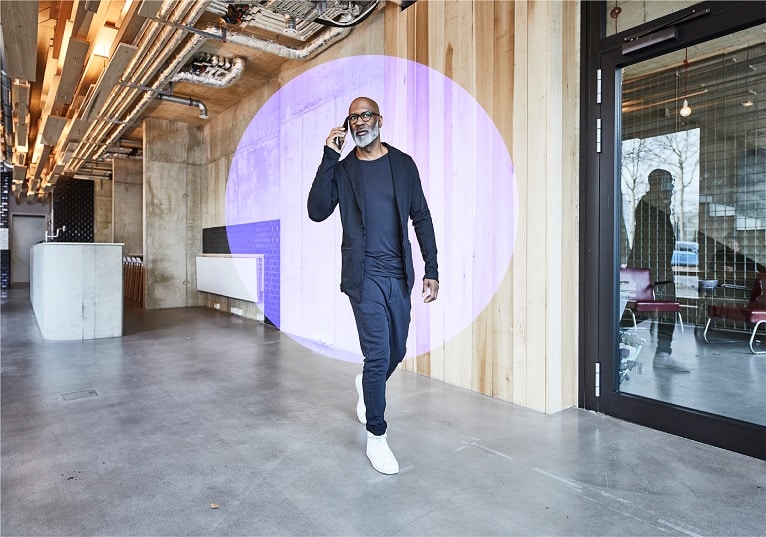3 Pillars of Modern Workplace Collaboration
As hybrid working becomes the new norm, how do we maintain collaboration and idea sharing? To ensure the success of hybrid working and maintain the kind of cloud-based collaboration that breeds success, there are three core pillars to address: connectivity, cyber security, and digital inclusion.
From Legacy to Evergreen:Read our Modern Workplace Case Study >>
1. Connectivity
At a basic level, high speed internet means that a vast amount of the working population can now work from anywhere successfully. However, as we have all no doubt experienced, remote connection does not always allow for seamless working conditions. Without a reliable connection, and the right communications platforms, software and hardware, collaboration is significantly limited.
Fortunately, with technology enhancements like the rollout of fibre optic to UK homes and the increasing coverage of both 4G and 5G, IT teams now have more techniques for ensuring remote workers can be supported with reliable connectivity.
For many, meetings serve as one of the main vehicles for collaboration. It’s where ideas can bounce between participants and key decisions are made. But with some employees working from home, and some from offices, businesses need to pay close attention to how video conferencing software interacts with physical meeting rooms.
For example, if you have rolled out video teleconferencing software such as Zoom or Microsoft Teams in the last 18 months, have your meeting spaces been updated to support this technology? In many cases the answer is no, resulting in employee frustration and unproductive hybrid meetings. Businesses should begin by ensuring that their audio and video quality is of a sufficiently high standard to cultivate a shared atmosphere.
At Telefónica Tech UK&I we have supported businesses to bridge this divide by equipping meeting rooms with HD microphones, speakers, and monitors, and 360° video. This really helps remote workers feel more connected to those in physical meeting rooms. In addition, meeting participants may need to adapt their style to ensure all colleagues feel included.
2. Cyber Security
Combatting cyber threats continues to be one of the highest items on board-level agendas. Recent research found that 52% of executives said employees are the biggest threat to their operational security.* With this in mind, it is essential that employers are raising awareness of, and training employees in cyber security at all levels.
Executives, CISOs and security leaders need to ensure effective awareness campaigns are being driven with a clear nod to the remote workers. It is also vital that training is not seen as a one-time project, but as an ongoing education programme.
In addition to encouraging on-the-ground defence throughout your organisation, having the right technology and skills is key. With the cyber threat landscape changing at a rapid pace, modern up-to-date protection tools for remote working scenarios are essential.
The legacy products from big vendors that have been used in the past do not cut it today. Instead, businesses should be investing in technology that protects against zero-day attacks.
To remove the ongoing skills and technology challenges, many businesses are finding that external support from expert managed security services suppliers is an effective way to remain firmly in control. For example, we work with a number of companies on a Security Operations Centre (SOC) model. This model allows ongoing security support with minimal involvement from internal IT departments.
3. Digital Inclusion
Exclusion is the enemy of a collaborative workforce. Diversity of people and skills exist at the heart of modern business. But, if issues with security and connectivity persist, employees can feel excluded from the cut and thrust of working life. The rise of remote and hybrid working should be an opportunity for a variety of people and social groups, across different geographic locations, to lead fulfilling, balanced careers. For that reason, care needs to be taken so that employees are allowed to flourish wherever they choose to work.
Ensuring that inclusion comes from both technological and holistic solutions is important. If a member of staff who does much of their work from a remote location is regularly having connection issues, they can quickly feel isolated from their teams. So, it falls to both IT and HR departments to prevent this from happening, monitoring situations carefully from both a business and pastoral point of view.
When I am speaking to my Telefónica Tech management team, I encourage the use of tools such as Microsoft’s Viva platform which helps managers understand how inclusive they have been with teams, as well as offering insights on how to encourage better collaboration. These tools can serve as our eyes and ears, giving us the data needed to create a better collaborative team environment.
Behavioural analytics can also play a key role in ensuring employee wellbeing and job satisfaction. By analysing behavioural patterns to understand employee activity, organisations can help to ensure remote working is manageable and sustainable.
There are so many innovative technology solutions available which can enable employers to make hybrid working a real success.
With the correct implementation and ongoing analysis, technology can help to foster collaboration and inclusion within the modern workplace, wherever employees may be based.
The Modern Workplace
The technology to support your modern workplace needs careful design, deployment and planning. Our experts can you help optimise yours with the right technology choices.


